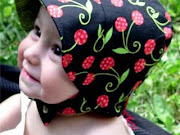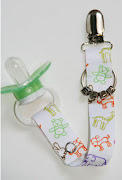In many communities across America the complaint is the same; “I want to help my children learn about other races, religions and cultures, but my community isn’t very integrated & my circle of friends is not diverse, what do I do?” It’s true that although we are a country of diverse backgrounds, most people tend to seek out groups of friends of the same race, religion and/or ethnicity. It is easier to find common ground and the language barrier is not present when spending time with others who share in our culture. However, parents would like their children to be accepting and tolerant of other cultures even though they may not be exposed to them on a regular basis, what’s a parent to do?
Enter the wonderful world of children’s television programming. With the choices our children now have, you can expose your children to multiple cultures, languages and traditions all in the same afternoon. A new study released recently from the American Academy of Pediatrics reveals that high-quality educational programming can have a positive effect on young children. These programs assist in the acquisition of general knowledge and improve cognitive learning among children ages six and younger. The report also states that educational programming which emphasizes cultural and racial diversity can improve children’s attitudes to those subjects.
So, the television now becomes the ultimate cultural teacher & not the “boob tube” that parents once thought it to be. The one possible drawback to this seemingly perfect answer? There must be culturally diverse and age-appropriate shows for children to view & learn from.
Luckily for us parents searching, children’s programmers have responded. There are any number of shows on television today featuring characters of different races, with disabilities and even those that speak different languages. Three child-oriented stations are leading the pack with their high-quality, diverse and educational television programs.
PBS is the trailblazer in this category features Sesame Street, which has taught generations of children around the world their ABCs and how to count. Much more than that, since the inception of the show 35 year ago, there have been racially diverse characters & characters with disabilities & they all work together to promote the overall the message of acceptance and togetherness. Even today, there are strong female characters, multi-lingual characters that teach “words of the day,” & they have featured adopted families, non-traditional families & characters in wheelchairs all enjoying their time on 123 Sesame Street.
Nickelodeon has been the big winner in viewer share and profit with their introduction of Dora the Explorer and it’s spin off, Go Diego Go. These educational cartoons feature multi-lingual, Hispanic characters that teach about animals, letters, numbers, counting and Hispanic traditions. The real innovation with these programs is that they also focus on teaching Spanish to non-native speakers. The repetition and interactive nature of the 30 minute shows make learning fun and also get children up off of the couch to participate in the actions that Dora, Diego and their friends instruct.
Nick is also launching a series in February with an Asian-American leading lady. The show, “Ni Hao, Kai Lan,” was created by a first generation Chinese American. It targets 2- to 5-year-olds and follows bilingual five-year-old Kai-Lan as she learns about her inter-generational Chinese-American family. The curriculum focuses on social and emotional lessons, multicultural values, cause-and-effect thinking, and basic Mandarin Chinese language skills.
Finally, we have NOGGIN TV and the show, Little Bill, the everyday adventures of an African-American boy. The show is based on Bill Cosby’s popular book series and is developed through research and in consultation with educational experts. The show is designed to help kids celebrate their everyday experiences and the people who share them. Little Bill shows kids that what they do makes a difference in the world. By dealing with conflicts encountered in everyday life, the program encourages children to value the love of their family, to increase self-esteem, and to develop social skills.
These programs are just the first in a long line of diverse and unique shows that will help our children to see that different is just different and we are no better or worse for not looking, speaking or dressing like “everyone else.” Congratulations to PBS, Nickelodeon and Noggin TV for being innovators and addressing the need that we as parents have for teaching from the comfort of our own homes. Nothing replaces the human interaction and relationships that are important to helping children understand cultural differences; it is still important to try to get involved and meet other families that are different from us. In some circumstances however, that proves extremely difficult and given the choice between not exposing them to these differences at all, or spending an hour watching any of the children’s programs that were created to teach and enrich their experiences, I’m picking up the remote control.






















No comments:
Post a Comment